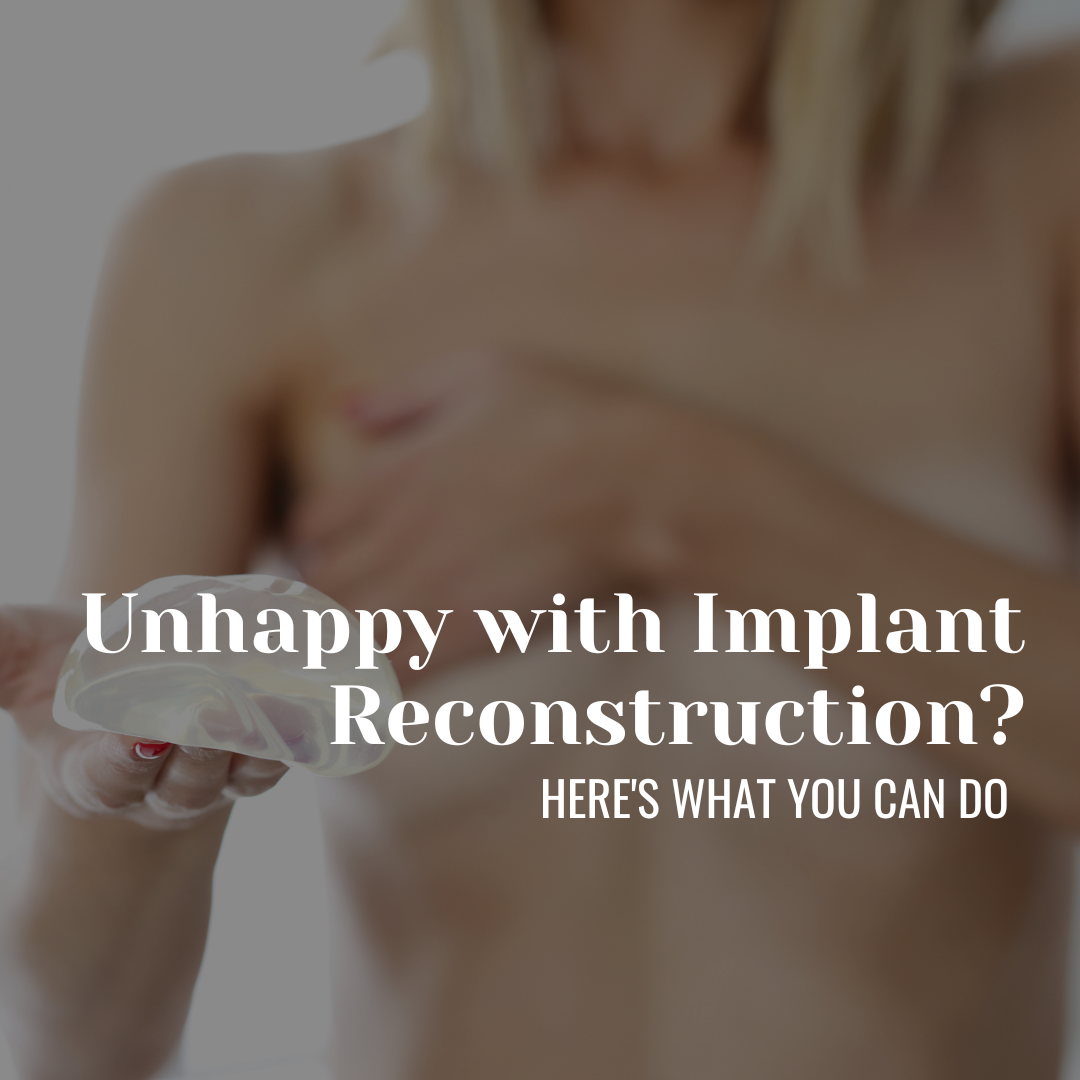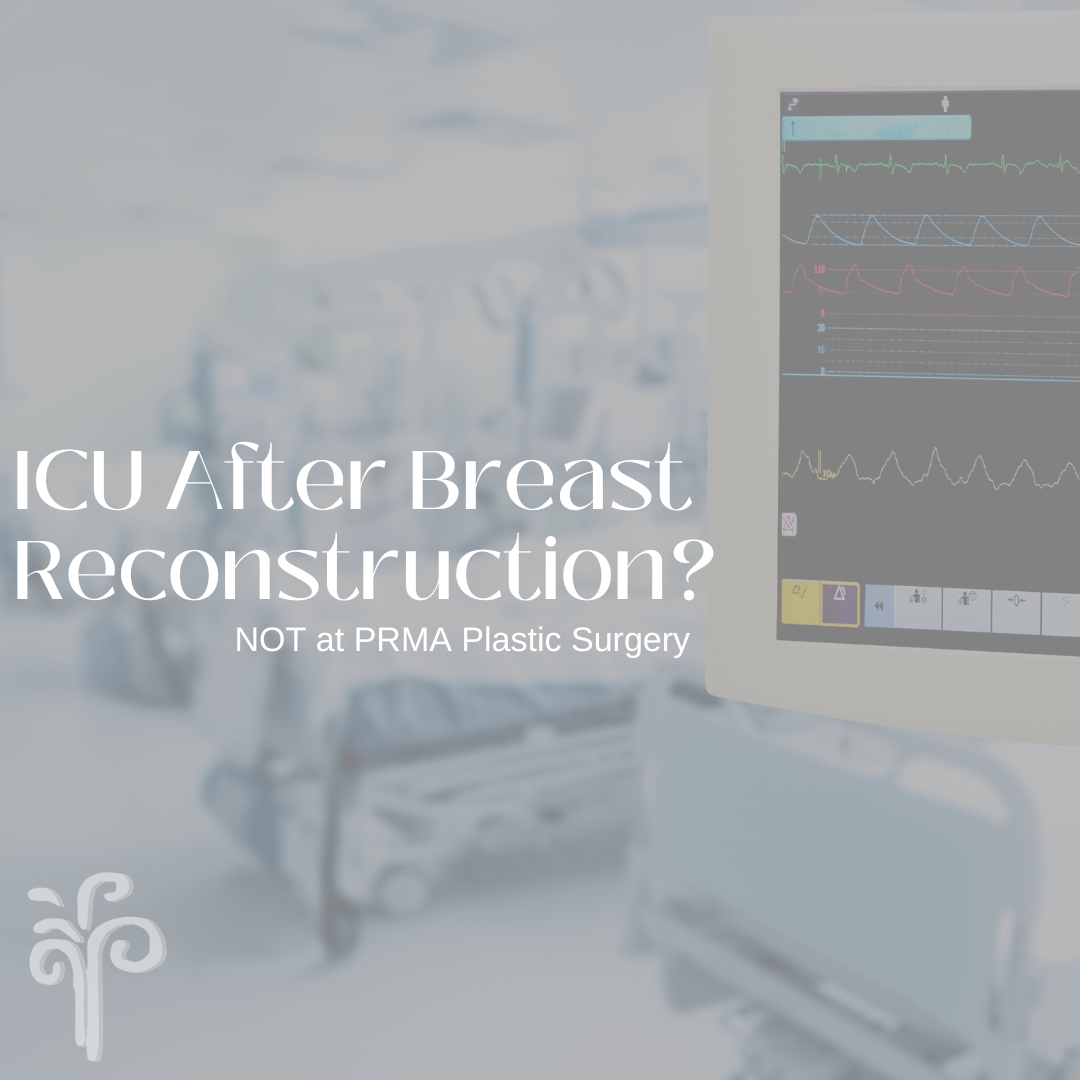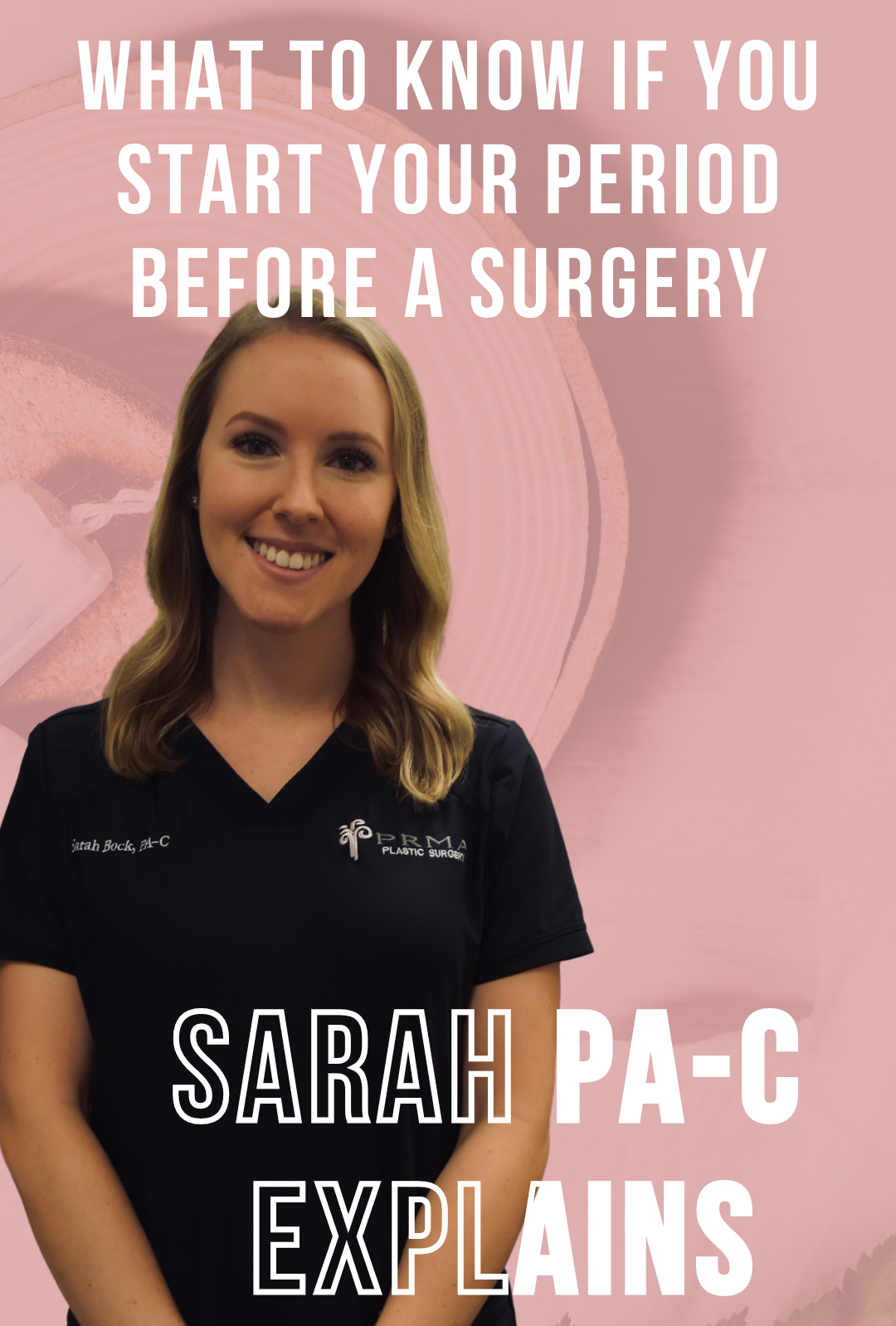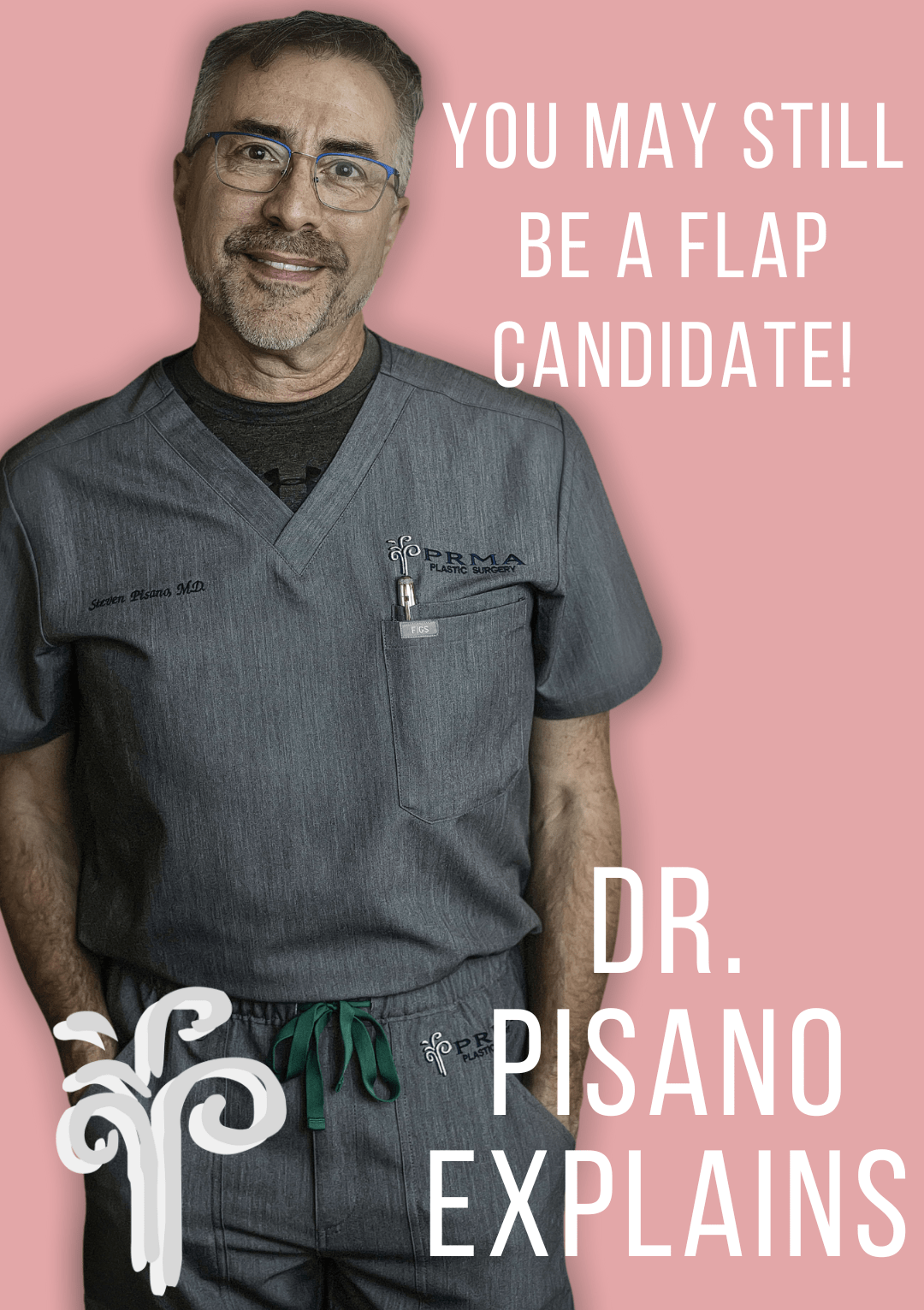
- 0 Comments
- PRMA Plastic Surgery
What is DIEP flap reconstruction surgery?
DIEP flap reconstruction surgery, or Deep Inferior Epigastric Perforator flap surgery, is a type of breast reconstruction surgery that uses tissue from the lower abdomen to create a new breast after a mastectomy. It is a microsurgical procedure that involves transferring blood vessels, skin, and fat from the lower abdomen to the chest to reconstruct the breast without sacrificing the abdominal muscles.
Is DIEP flap better than implants?
Whether the DIEP flap reconstruction is better than implants depend on the individual patient’s needs, preferences, and priorities. DIEP flap reconstruction have some advantages over implants, creating a more natural-looking and feeling breast, having a breast that will last a lifetime, and the potential for improved abdominal contour due to the use of excess abdominal tissue. And DIEP flap reconstruction avoids the risk of implant specific complications such as capsular contracture, and implant rupture. However, it is a more complex and lengthy surgery compared to implant-based reconstruction and may not be suitable for all patients.
Is DIEP flap surgery a major surgery?
DIEP flap surgery is considered a major surgery. It is performed in a hospital operating room using a general anesthetic. It is a complex operation, which involves microsurgery to reconnect blood vessels and nerves. With any major surgery there is the potential for risks and complications such as bleeding, infection, scarring, and anesthesia-related risks.
How painful is DIEP flap surgery?
All surgeries cause pain. The pain with DIEP flap surgery can be treated with medications prescribed by the surgical team. Pain after DIEP flap surgery is manageable and tends to improve over time as the body heals. At PRMA Plastic Surgery, we are committed to providing the best possible care for our patients. That’s why we have adopted the Enhanced Recovery After Surgery (ERAS) approach to perioperative care. ERAS is a comprehensive, multimodal approach to perioperative care that emphasizes patient education and preparation, optimized pain control and nutrition optimization.
Will my stomach be flat after DIEP flap surgery?
The changes in abdominal contour after DIEP flap surgery depends on several factors. The flatness of the abdomen depends on individual factors such as the amount of excess abdominal tissue present, the location of the fat, the surgical technique used, and the patient’s overall body shape. While DIEP flap surgery can result in a flatter abdominal contour, it is not a guaranteed outcome, and there may be residual roundness to the abdominal shape.
How is DIEP flap different from tummy tuck?
DIEP flap surgery and tummy tuck (abdominoplasty) are different procedures. While both involve reshaping the abdominal area, DIEP flap surgery is a breast reconstruction procedure that uses excess abdominal tissue to recreate a breast. A tummy tuck is a cosmetic procedure that removes excess skin and fat from the abdomen to create a flatter abdominal contour. The location of the abdominal scar can be selected in abdominoplasty where as in DIEP flap surgery, the final scar location depends upon blood vessel location.
How much belly fat is needed for DIEP?
The amount of belly fat needed for DIEP flap surgery depends on the patient’s individual anatomy, and the specific requirements of the surgery. Generally, there must be enough excess abdominal tissue to create a reconstructed breast that will be satisfactory for the patient. That amount can vary widely from one person to the next.
Who is not a good candidate for DIEP flap surgery?
Not all patients may be suitable candidates for DIEP flap surgery. Patients who do not have enough excess abdominal tissue, have medical conditions that increase the risks of surgery or healing, or have contraindications to microsurgery may not be good candidates for DIEP flap surgery. A thorough evaluation by a qualified plastic surgeon is necessary to determine the suitability of a patient for DIEP flap surgery.
How long does it take to do a DIEP surgery?
The duration of DIEP flap surgery can vary widely depending on the complexity of the case, the surgeon’s experience, and other factors. DIEP flap surgery takes several hours to complete, at PRMA we utilize two microsurgeons in every surgery, this allows the time under anesthesia to be around 6-8 hours.
Do patients go to ICU after DIEP surgery?
Not at PRMA! Patients at PRMA recover on a dedicated post surgical unit with other PRMA patients and are cared for by nurses who are specifically trained in DIEP Flap post operative care.
Why wear a binder after DIEP surgery?
Wearing a binder after DIEP flap surgery provides support to the abdominal area, reduces swelling, stabilizes the reconstructed breast and abdominal area, and can provide comfort during the initial stages of recovery.
How do you sleep after DIEP flap surgery?
Sleeping after DIEP flap surgery can be challenging due to discomfort and the need to protect the surgical site. It is generally recommended to sleep on your back with your head slightly elevated, use pillows for support, follow your surgeon’s instructions, avoid heavy lifting, and manage pain with prescribed medications. Consult with your surgical team for specific guidelines based on your individual case.
What is a bulge after DIEP flap?
A bulge or hernia can occur after DIEP flap surgery due to weakness or damage to the abdominal muscles during the surgery. This can result in a noticeable protrusion in the abdominal area. Proper abdominal muscle repair during the surgery and careful post-operative care can help reduce the risk of hernia formation.
-Dr. Arishita & Tabetha Williams
“Set realistic, attainable goals after your surgery. Your body is going to feel different now than it did before surgery. If you are doing it simply to lose weight or get back into a certain dress or pant size you may be setting yourself up for failure. Reset your compass.”
Leave Comment
Sign Up for Our Monthly Newsletter
Continue Reading

Understanding DIEP Flap Reconstruction: FAQs, Recovery, and Best Practices
Understanding DIEP Flap Reconstruction: FAQs, Recovery, and Best Practices April 18, 2023 Share on Facebook Twitter Linkedin What is DIEP flap reconstruction surgery? DIEP flap reconstruction surgery, or Deep Inferior Epigastric Perforator flap surgery, is a type of breast reconstruction surgery that uses tissue from the lower abdomen to create a new breast after a […]

Unhappy with Your Implant Reconstruction Results? Here’s What You Can Do
Unhappy with Your Implants? April 05, 2023 Share on Facebook Twitter Linkedin Breast Reconstruction is a transformative surgery that helps many women feel whole again after battling breast cancer. While the procedure can be a significant step in your healing journey, it’s crucial to know what to do if you’re unhappy with your results.Be Honest […]

Enhanced Recovery After Surgery (ERAS): The Future of Perioperative Care at PRMA Plastic Surgery
Enhanced Recovery After Surgery (ERAS): The Future of Perioperative Care at PRMA Plastic Surgery March 31, 2023 Share on Facebook Twitter Linkedin At PRMA Plastic Surgery, we are committed to providing the best possible care for our patients. That’s why we have adopted the Enhanced Recovery After Surgery (ERAS) approach to perioperative care. ERAS is […]

Preventative Breast Mastectomy: Taking Control of Your Breast Cancer Risk
Preventative Breast Mastectomy: Taking Control of Your Breast Cancer Risk March 23, 2023 Share on Facebook Twitter Linkedin Considering a Preventative Mastectomy?Whether you have a BRCA gene mutation or a family history of breast cancer, your doctor might have suggested a prophylactic mastectomy to lower your risk.This procedure, also known as a preventative mastectomy, removes […]

No ICU Stay Needed: PRMA’s Advanced Surgical Techniques and Recovery Protocols
No ICU Stay Needed: PRMA’s Advanced Surgical Techniques and Recovery Protocols March 22, 2023 Share on Facebook Twitter Linkedin DIEP (Deep Inferior Epigastric Perforator) flap surgery is a popular breast reconstruction surgery that uses a patient’s own abdominal tissue to reconstruct the breast after a mastectomy. This procedure is becoming increasingly popular due to its […]

TruSense®
TruSense® March 15, 2023 Share on Facebook Twitter Linkedin Breast cancer is a devastating diagnosis that affects millions of women every year. For many women, a mastectomy is the recommended course of action to remove the cancerous tissue. While a mastectomy can be lifesaving, it often comes with the undesired side effect of lost sensation […]

What to Know if You Start Your Period Before a Surgery: Expert Advice for Women
What to Know if You Start Your Period Before a Surgery: Expert Advice for Women March 10, 2023 Share on Facebook Twitter Linkedin What Happens if You Start Your Period Before Surgery? Starting your period before a surgery can be a cause of concern for many women. It is important to understand that surgery puts […]

Too Thin For DIEP Flap? You May Have Other Flap Options!
Too Thin For DIEP Flap? You May Still Be A Flap Candidate! March 03, 2023 Share on Facebook Twitter Linkedin What happens if you are too thin for DIEP flap surgery? At PRMA we have successfully performed DIEP flap reconstructions on women with BMI’s of 20 and even less. For those who are deemed “Too […]

How Long Will I Be Out Of Work After DIEP Flap Breast Reconstruction Surgery?
How Long Will I Be Out Of Work After DIEP Flap Breast Reconstruction? January 31, 2023 Share on Facebook Twitter Linkedin DIEP Flap Breast Reconstruction is a major surgery that requires planning, support, and 4-6 weeks of recovery time. The exact length of time off work after a DIEP flap will depend on several factors, […]

This Simple Coding Change Could Kill Access to DIEP Flap Breast Reconstruction for Thousands of Americans
This Simple Coding Change Could Kill Access to DIEP Flap Breast Reconstruction for Thousands of Americans January 25, 2023 Share on Facebook Twitter Linkedin Changes in medical coding by the Centers for Medicare and Medicaid Services (CMS) will severely limit the breast reconstruction options women have available through insurance, potentially making procedures like the DIEP […]


No Comments